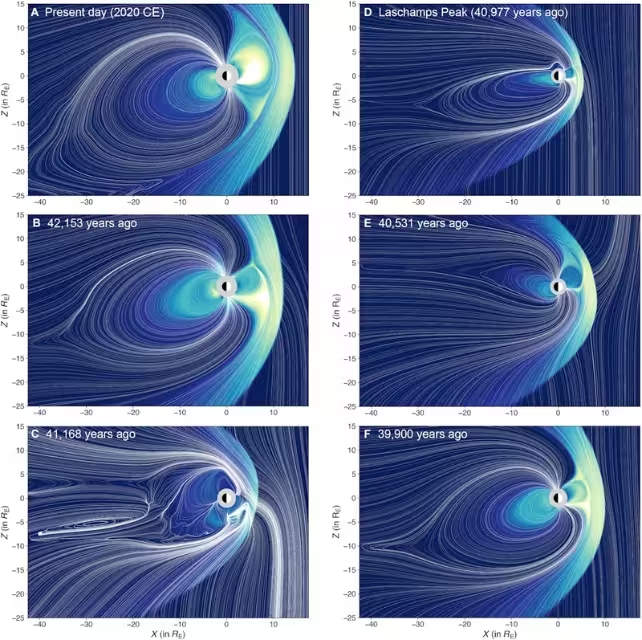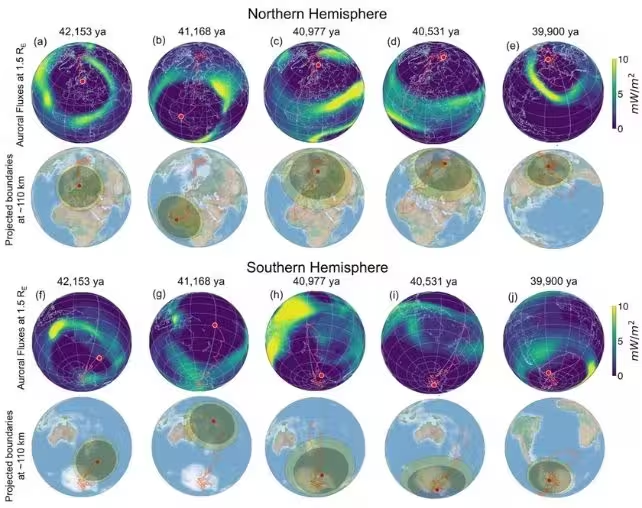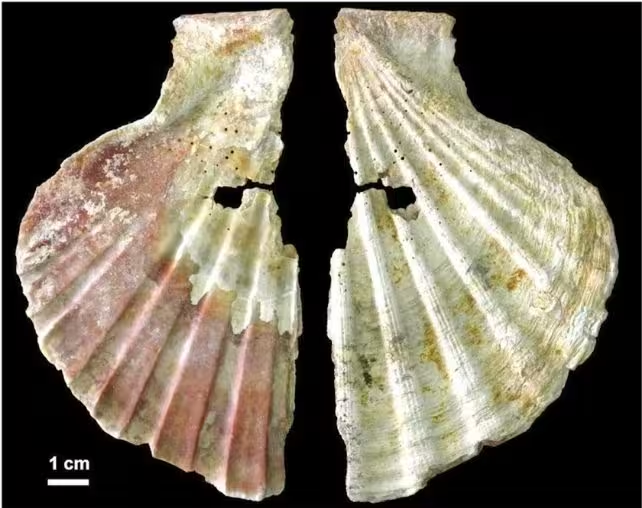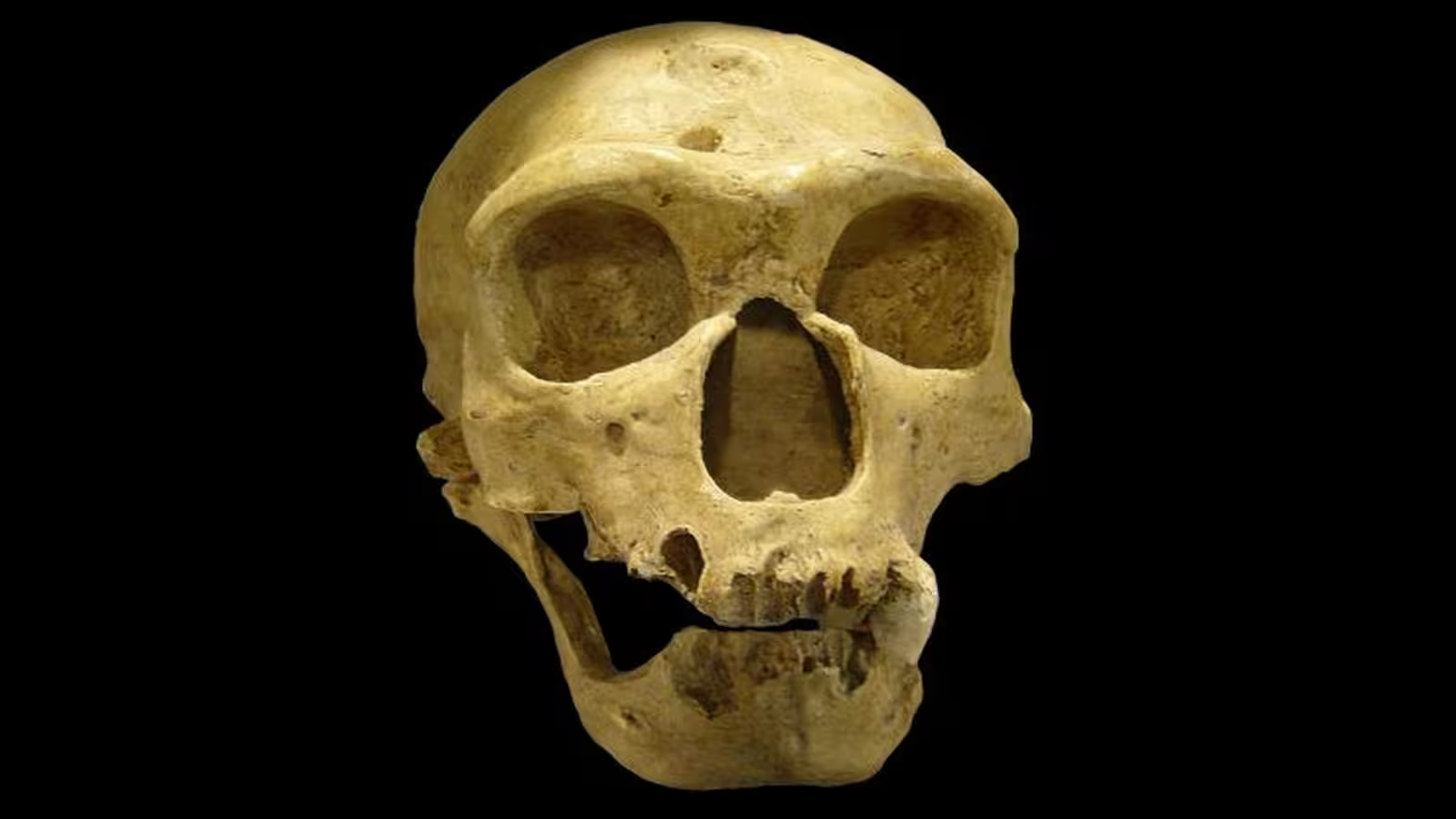5 Minutes
The Enduring Mystery of Neanderthal Extinction
For decades, the fate of the Neanderthals—a close human relative who thrived across Europe and western Asia—has puzzled scientists. Despite extensive archaeological and genetic research, scholars remain divided over what caused their disappearance around 40,000 years ago. While traditional theories emphasize competition with Homo sapiens, climate change, or interbreeding, a recent study introduces a surprising new contender: space physics.
A New Cosmic Perspective: The Laschamp Event
A groundbreaking study from the University of Michigan, led by space physicist Agnit Mukhopadhyay and published in Science Advances, suggests that the extinction of Neanderthals may have been influenced by astrophysical forces. The focus is on the Laschamp event, a short-lived geomagnetic reversal that occurred approximately 41,000 years ago. During this period, Earth’s magnetic field dramatically weakened, diminishing the planet’s shield against cosmic rays and ultraviolet radiation from the sun.
According to Mukhopadhyay, this period of magnetic instability exposed the planet’s surface—along with the Neanderthals inhabiting it—to unusual levels of solar and cosmic radiation. The study employs advanced three-dimensional geospatial models to simulate the Earth’s protective magnetosphere during the Laschamp event, proposing that the increased radiation may have led to harsher environmental conditions that proved especially challenging for Neanderthals.

Did Homo Sapiens Outcompete Neanderthals?
Mukhopadhyay’s hypothesis further argues that Homo sapiens possessed cultural and technological advantages that may have offered protection against UV and cosmic radiation. These include the likely use of well-fitting clothing, application of ochre (a natural pigment with potential UV-filtering properties), and regular sheltering in caves—features thought to be less prevalent among Neanderthals.
The Clothing Conundrum: Evidence and Interpretations
One of the study’s central assumptions is that Neanderthals lacked tightly-fitted clothing, leaving them exposed to harmful radiation. However, this remains speculative. While sewing needles are seldom found in Neanderthal sites and are more commonly linked to Homo sapiens and Denisovans as far back as 50,000 years ago, this absence doesn’t prove Neanderthals went unclothed. Numerous archaeological finds demonstrate that Neanderthals processed animal hides using sophisticated flint tools, suggesting the creation of functional, if not tailored, clothing.
Moreover, a genetic study analyzing lice lineages indicates that humans began wearing clothing at least 200,000 years ago, predating the emergence of both species’ advanced sewing technology. In cold Ice Age Europe, survival without insulation would have been virtually impossible, pointing strongly to the use of some form of body covering—possibly tied, wrapped, or secured with bone splinters rather than stitched with needles.

Ochre as Prehistoric Sunscreen?
The study also highlights the use of ochre among Homo sapiens, proposing the pigment acted as a barrier against solar radiation. Experimental research supports that ochre can filter some ultraviolet rays, but pigment use was not exclusive to modern humans. Archaeological evidence reveals Neanderthals in Europe and the Levant used ochre for over 100,000 years, applying it for a range of purposes: from body decoration and symbolism to therapeutic or cosmetic uses, and possibly even as insect repellent. There is currently no conclusive data to show that Homo sapiens alone benefited from ochre’s protective qualities, nor that its application was consistently intended as sunblock.
Population Dynamics and Technological Advances
Population Size Matters
While environmental factors played a role in Neanderthal history, many researchers highlight the impact of population dynamics. Genomic studies reveal that by the time Homo sapiens spread across Eurasia, Neanderthals were already experiencing demographic decline. With relatively small, fragmented populations, they would have been vulnerable to assimilation through interbreeding and cultural blending.
Notably, evidence from the DNA of living people indicates that Neanderthals were not entirely wiped out; instead, their genes persist in all non-African modern humans. Rather than pure extinction, the process involved absorption and genetic merging through successive generations.
Technological Innovation: A Game Changer
Another well-cited theory involves technology. Homo sapiens are credited with pioneering projectile weapons, such as spears and eventually bows, which allowed hunting at a distance and expansion into diverse environments. Neanderthals, in contrast, largely relied on close-range tools. This technological leap may have supported larger, more mobile populations, enabling sapiens to exploit resources more efficiently and increase their chances of survival, especially during times of environmental stress.

Challenging the Magnetic Field Hypothesis
Assigning the demise of the Neanderthals primarily to increased cosmic and ultraviolet radiation during the Laschamp event is a provocative idea, but it faces substantial challenges. The archaeological record does not indicate a sudden, catastrophic population crash in correspondence with the magnetic reversal. There is no mass extinction event evident among other human species or large mammals at that time either.
Moreover, if heightened solar radiation had been so lethal, we would expect elevated mortality among early Homo sapiens living outside caves or lacking advanced clothing—in regions like Africa or southern Eurasia. Yet, there is no evidence of such widespread impact. Instead, Neanderthals survived, adapted, and innovated through multiple environmental upheavals, including other magnetic reversals such as the Blake event roughly 120,000 years ago.
The Need for Multidisciplinary Understanding
Explaining the Neanderthal disappearance requires integrating data from archaeology, paleoanthropology, genetics, and even atmospheric physics, rather than relying on single-cause scenarios. Neanderthals were not evolutionary failures or passive victims of a hostile environment. Over more than 300,000 years, they displayed creativity, resilience, and complexity—from advanced lithic technology to symbolic expression—mirroring the cognitive capacities of early Homo sapiens.
As Professor Chris Stringer of the Natural History Museum, London, summarizes: “Neanderthals were robust, adaptable, culturally complex humans. Their disappearance was likely due to a mosaic of reasons, not one catastrophic moment.”
Conclusion
The hypothesis that a geomagnetic reversal and resulting cosmic radiation doomed the Neanderthals offers a fascinating cosmic twist but remains, at present, unsupported by the broader scientific evidence. Modern research points to a complex web of factors: environmental pressures, demographic weakness, technological innovation, and interbreeding with Homo sapiens. As we continue to explore our deep human history, it’s clear that the Neanderthal story is one of resilience and adaptability rather than simple extinction—reminding us how scientific perspectives evolve with every new discovery in archaeology, genetics, and even space physics.
Source: theconversation



Comments